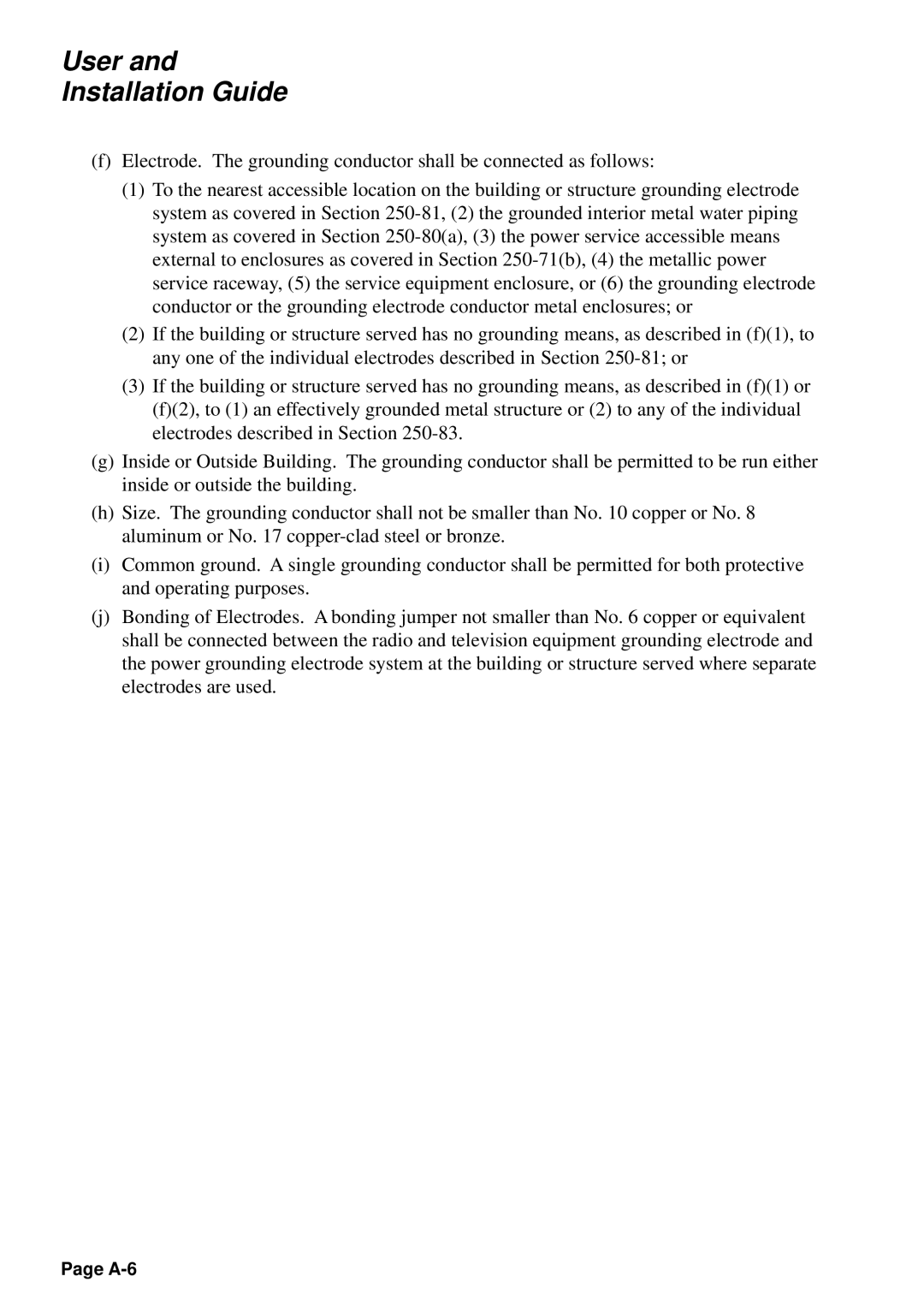User and
Installation Guide
(f)Electrode. The grounding conductor shall be connected as follows:
(1)To the nearest accessible location on the building or structure grounding electrode system as covered in Section
(2)If the building or structure served has no grounding means, as described in (f)(1), to any one of the individual electrodes described in Section
(3)If the building or structure served has no grounding means, as described in (f)(1) or (f)(2), to (1) an effectively grounded metal structure or (2) to any of the individual electrodes described in Section
(g)Inside or Outside Building. The grounding conductor shall be permitted to be run either inside or outside the building.
(h)Size. The grounding conductor shall not be smaller than No. 10 copper or No. 8 aluminum or No. 17
(i)Common ground. A single grounding conductor shall be permitted for both protective and operating purposes.
(j)Bonding of Electrodes. A bonding jumper not smaller than No. 6 copper or equivalent shall be connected between the radio and television equipment grounding electrode and the power grounding electrode system at the building or structure served where separate electrodes are used.
